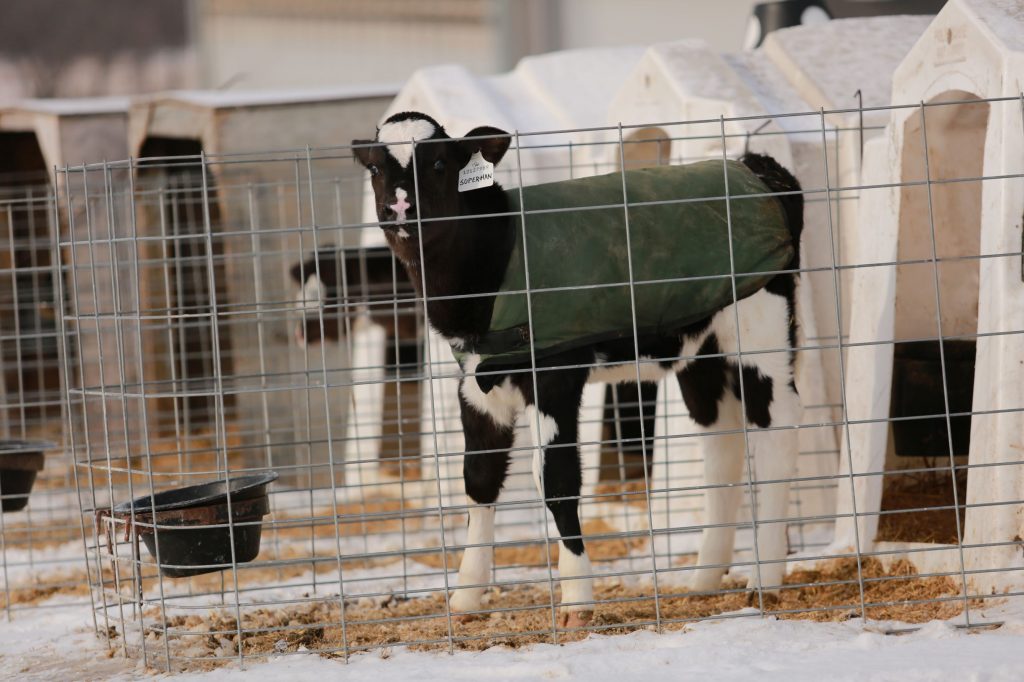Healthy Calf Conference
Follow to stay up-to-date on all Healthy Calf Conference updates. Speaker announcements, sponsorship information, registration announcements, and more.
When its cold outside (less than 15⁰C), calves under three weeks of age need to use energy to keep warm. Older calves need to use energy for warmth when temperatures are below 5⁰C. In -4⁰C weather, calves require 32% more energy to stay warm compared to calves in 10⁰C. This can result in lost growth and productivity if calf raisers don’t adjust management according to the weather. Proven strategies to help calves stay productive in cold temperatures include providing deep straw bedding, using calf coats, increasing milk allowance, and reducing drafts. A 2018 study by Beiranvand et. al. examined a new strategy to improve winter performance – changing the dry matter content of calf starter.

During the study, temperatures ranged from -7.4⁰C to 12.9⁰C (average of 2.1⁰C) and calves were fed diets containing 90% dry matter (control – lowest moisture), 75% dry matter (intermediate moisture), or 50% dry matter (highest moisture). The starter diet contained the same ratio of ingredients for all calves and was 55.1% ground ingredients (soybean meal, barley and corn gluten meal), 21.9% whole corn, 10% rolled barley and 10% chopped alfalfa hay.
Sorting behaviour lessened as moisture level rose. Once wet, smaller particles stick to larger particles, so fewer small particles and dust are left behind. It is thought that reducing small particles and dust improves palatability (taste) and, therefore, consumption. Some studies suggest that moisture can improve texture and dilute less palatable flavours. Adjusting dry matter content is a known method of reducing feed sorting in cows.
Total ruminal volatile fatty acid (VFA) concentrations increased with greater moisture content. VFAs are the product of rumen fermentation which and stimulate rumen development in pre-weaned calves. They’re also the main source of energy for weaned calves and cattle. Higher VFA levels indicate a more developed and functional rumen. Adding water to starter without changing any other aspect of calf raising may improve rumen development, which helps calves more smoothly transition to a solid feed diet at weaning.
Average daily gain (ADG) during the pre-weaning period was greatest (0.67 kg/day) for calves fed 75% dry matter, while calves fed 50% dry matter had the highest post weaning ADG at 1.22 kg/day. Calves fed 75% dry matter had the heaviest weight at weaning (76.8 kg at day 50), but there was no significant effect of diet on post-weaning weight. This may mean that there are different ideal moisture levels for calf starter pre and post weaning, up to 70 days, when the trial ended.
Starter intake did not differ between treatments, so all calves were consuming approximately the same level and amount of nutrients, with only the moisture content (and, therefore, water intake) being different. Studies of calves provided free choice water demonstrate that increased water intake translates into improved growth performance before and after weaning by enhancing rumen development and nutrient utilization efficiency.
This study provided the first evidence that adjusting the dry matter level of calf starter may protect productivity of calves in colder weather.
Follow to stay up-to-date on all Healthy Calf Conference updates. Speaker announcements, sponsorship information, registration announcements, and more.
The Codes of Practice are nationally developed guidelines for the care and handling of farm animals. They serve as our national understanding of animal care requirements and recommended practices.